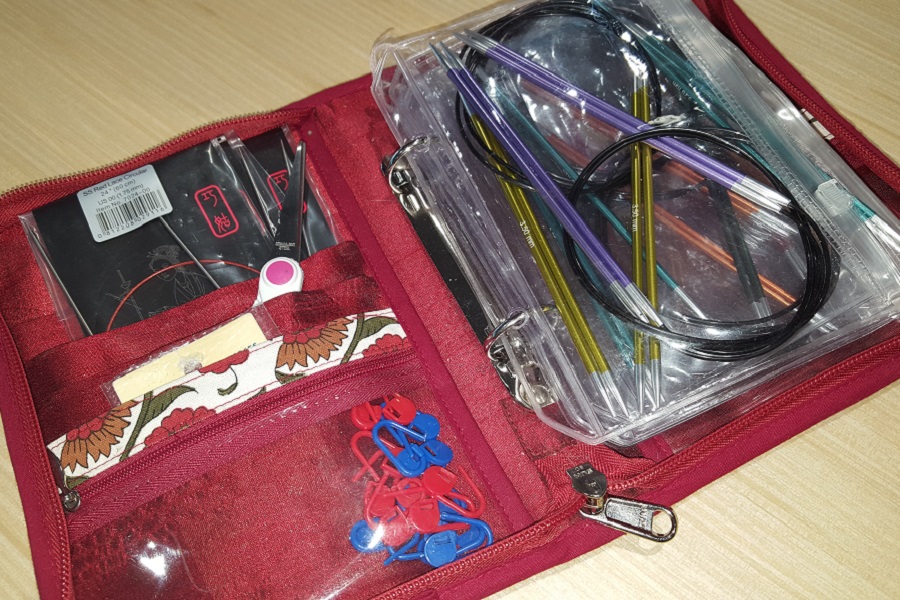Knitting Basics
Quick Links
- Archived - Ask a Knitting Question
- Basic Knitting Stitches
- Beginner Knitting Patterns
- Knitting Abbreviations
- Needle Sizes Chart
- Tension Squares
- Yarn Comparison Chart
FYI: This site receives a small amount in commissions from affiliate links and third-party advertising.
Ready to get started? Let's go through some knitting basics before you get started!
Obviously, you are going to need some wool and a set of knitting needles if you want to learn how to knit. Most knitting projects start with an idea, then you fnd a pattern that matches your idea.
The pattern determines what type and ply of wool you need and the needles sizes you need will depend on the tension specified in the pattern and your knitting tension.
Choosing a Knitting Pattern
The first thing you need is a pattern. Without one you just have a ball of wool and a couple of knitting needles (hopefully) and no idea of what you can do with them!
And not just any old pattern!
As a beginner you need to choose your pattern very carefully. Although it is relatively easy to learn to knit, your first few projects need to be something simple or you will find yourself getting frustrated (and probably annoyed) to the point that you just give up.
Most patterns published these days have a rating system which allows you to select a pattern suitable for your level of experience.
Then of course you will need wool or yarn and needles and at least some accessories. Your pattern will tell you what ply you need and make a suggestion as to the appropriate needle size.
When you have bought, borrowed or begged for all of the things you need, you can start knitting (almost - if you know how!)
Basic Knitting Instructions
There are only a couple of basic stitches that are used in knitting. Once you learn how to do those you can do virtually any knitting pattern.
To help you learn, I have put together some basic tutorials that you can view online with links to pdfs if you prefer to print them off and keep them. In particular, you will need to learn how to cast on your knitting, how to form knit stitches and how to cast off.
Once you are comfortable with plain or straight knitting you can start working on mastering more advanced techniques and will need to know how to increase and decrease stitches not only so that you can use more complex knitting stitch patterns in your work but also so that you can add shaping (i.e. shaping for armholes) to your projects.
You will also find a page on how to fix your knitting mistakes.
Reading a Knitting Pattern
Reading and understanding a pattern is a unique skill and as one of the knitting basics, you need to learn how to do it for your career as a knitter to be successful!
On this page you will find an outline of each of the major sections in a pattern so that you know what to look for in a pattern and to help you understand how to interpret what the pattern is telling you.
Getting Your Head Around Knitting Tension
As a beginner you will come across the phrase knitting tension but you might not know what that phrase means or why it is so important. Getting your tension correct is vital if you want your project to end up being the right size and shape. This is another one of the knitting basics that will determine whether or not your knitting projects turn out as expected (it is very important people - so do not skip this section...)
Basically the phrase is all about how big (or small) your stitches are for a given yarn weight and needle size. Some of us are tight knitters (like me) and some will naturally form stitches that are looser. There is no right or wrong, but you need to know what your tension is so that you can match the tension for any pattern you want to knit.
Understanding Knitting Jargon

Every pattern that you pick up will be filled with terms that you are unfamiliar with and a lot of abbreviations.
Would you like to know what they all mean?
Some of those abbreviations will be standard across patterns (I canhelp you with those) and others will be specific to that particular pattern. It pays to check the abbreviation section your pattern before you get started to work out if there are any abbreviations being used that you are unfamilar with. It might mean that you have a bit of learning to do.
Knitting Basics - Accessories
Yet another one of the knitting basics - if you are new to knitting, you will come across a bewildering array of knitting accessories for you to choose from. Would you like to know from an experienced knitter, which ones are worth buying?
You are also going to have to decide which type of knitting needles you want to use and you are going to need some knitting yarn and a pattern.
Couldn't Find What You Were Looking for?
Try searching the site using the search box below:

Recent Articles
-
Shetland Knitting and Shetland Knitters
Feb 07, 21 07:44 AM
Shetland knitting and the women in the Shetland Isle who create Shetland lace are among the best knitters in the world. -
Fixing Knitting Mistakes
Jan 28, 21 02:35 AM
When you are learning how to knit, you are going to make a few mistakes. It might not make you happy but fixing knitting mistakes is par for the course. -
Shetland Lace Knitting
Dec 11, 19 07:03 PM
Shetland Lace Knitting is a particular style of knitting that developed in the Shetland Islands and was one of the main exports of the Island early in the last century.
 >
>









